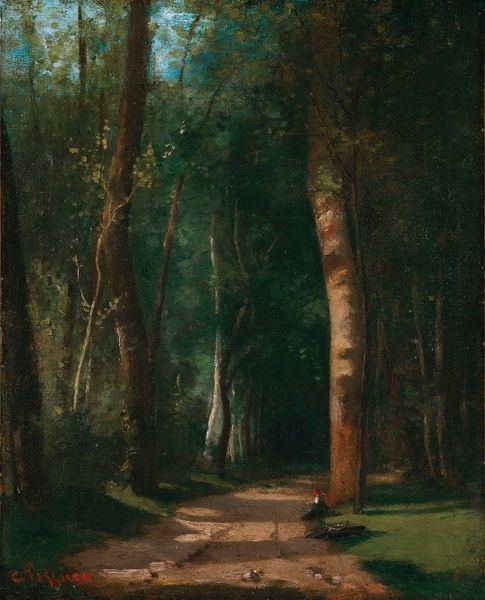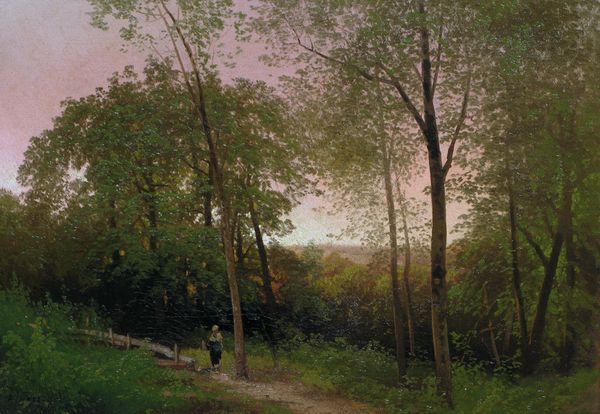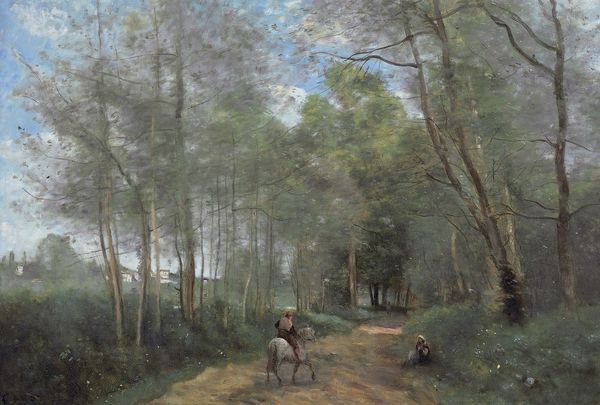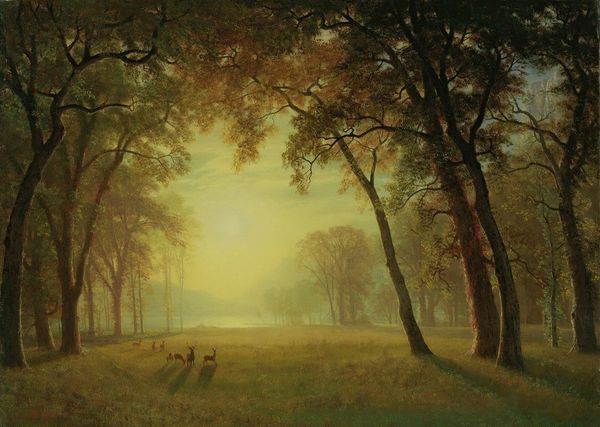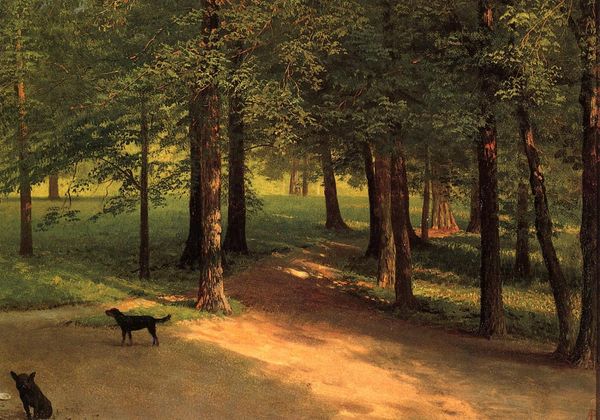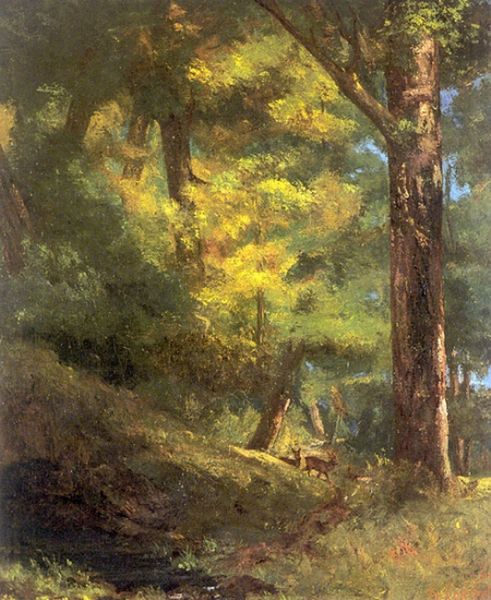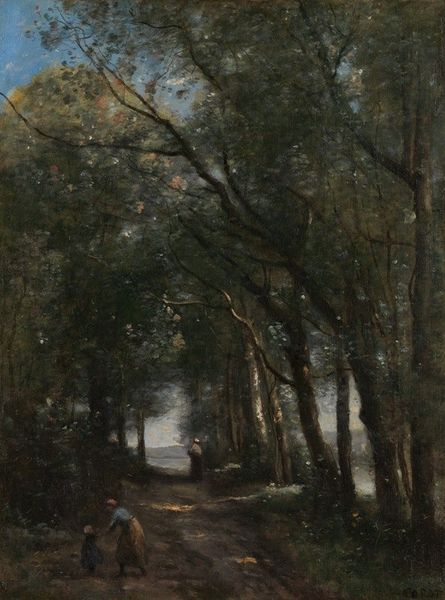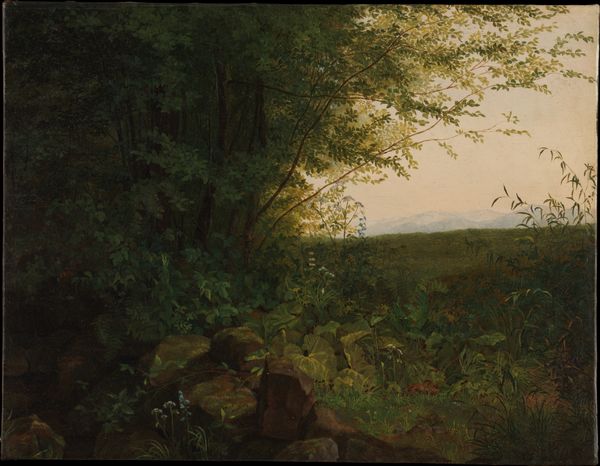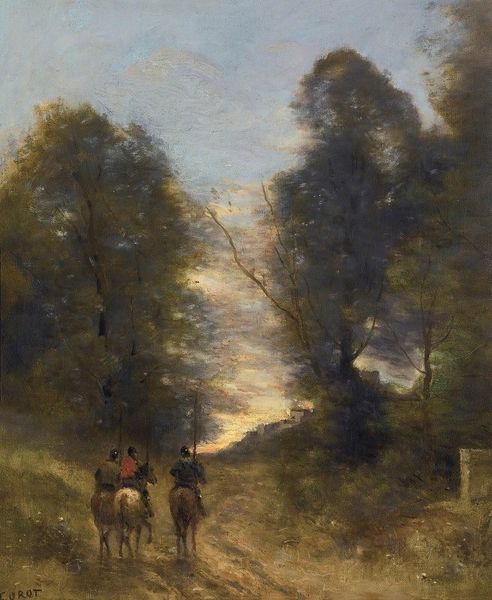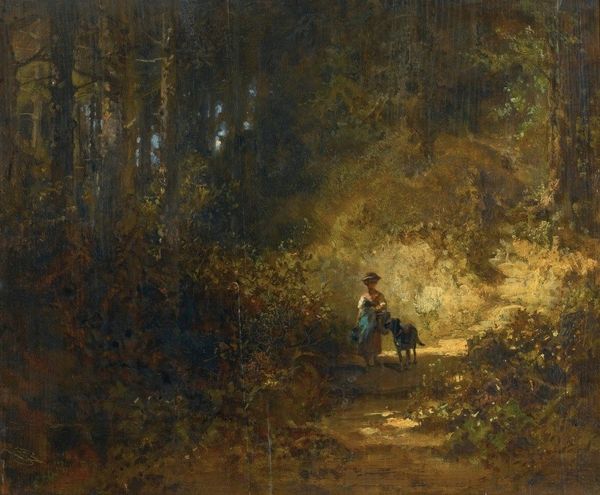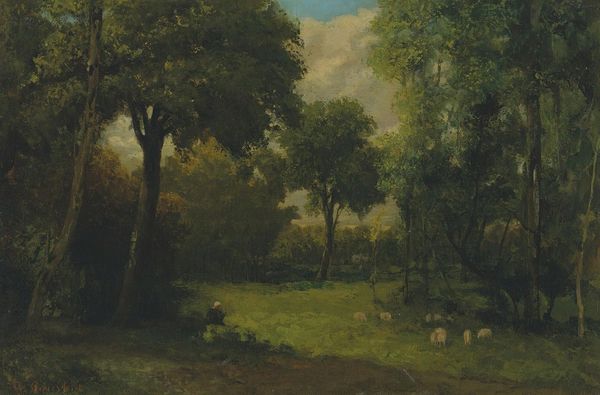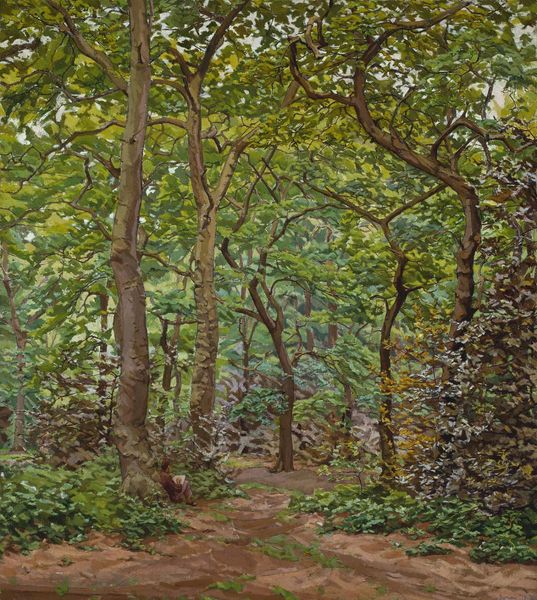
painting, plein-air
#
painting
#
countryside
#
plein-air
#
landscape
#
nature
#
form
#
romanticism
#
line
#
genre-painting
#
realism
Copyright: Public Domain: Artvee
Curator: This is "Ville d’Avray" by Camille Corot, painted sometime between 1835 and 1840. It captures a scene from the French countryside. Editor: Immediately, I’m drawn into the serenity of it. There’s this incredibly calming effect, despite the somewhat muted palette. It feels almost like stepping back into a forgotten dream. Curator: Absolutely. What’s interesting here is to consider how Corot navigates the traditions of landscape painting while simultaneously hinting at the burgeoning Realist movement. The genre elements are there, but are very much subdued. He wasn't as concerned with strict representations of nature, unlike some of his Realist contemporaries, but rather with expressing a feeling. Editor: Exactly! And I think the figures, the almost spectral figure and the cow, enhance that dreamy quality. They're so subtly placed, barely there, adding to the sense of hushed timelessness. Almost like memories fading at the edge of the mind... Curator: The light in this piece, too, contributes so much to that feeling. The way it filters through the leaves creates a play of shadows that both conceals and reveals. It’s worth considering the rise of plein-air painting in this era, and the influence this had on capturing light and atmosphere directly from observation. We have a kind of pre-impressionistic feeling. Editor: Right, Corot wasn't afraid to leave edges soft, to blur details. I love how the path sort of melts into the distance. It really invites your eye, encouraging you to take a walk in the scene. Curator: I agree. In thinking about Corot's broader context, this was also a period of great social and political change in France. The Romantic sensibilities blended with an increasing interest in depicting everyday life—we see this as it also intersects with other European landscape artists of the era and this move toward representations of local country life as distinct from sublime idealizations. Editor: It does speak volumes. This painting is more than just trees and cows. There is a profound understanding of, and respect for, the quiet rhythms of nature that I believe are relevant for today as much as they were then. I feel I want to stop talking and just… listen to it. Curator: I concur entirely, perhaps that’s the biggest takeaway when considering “Ville d’Avray," how a seemingly simple depiction of a landscape can evoke a deeply reflective experience of space and time.
Comments
No comments
Be the first to comment and join the conversation on the ultimate creative platform.
